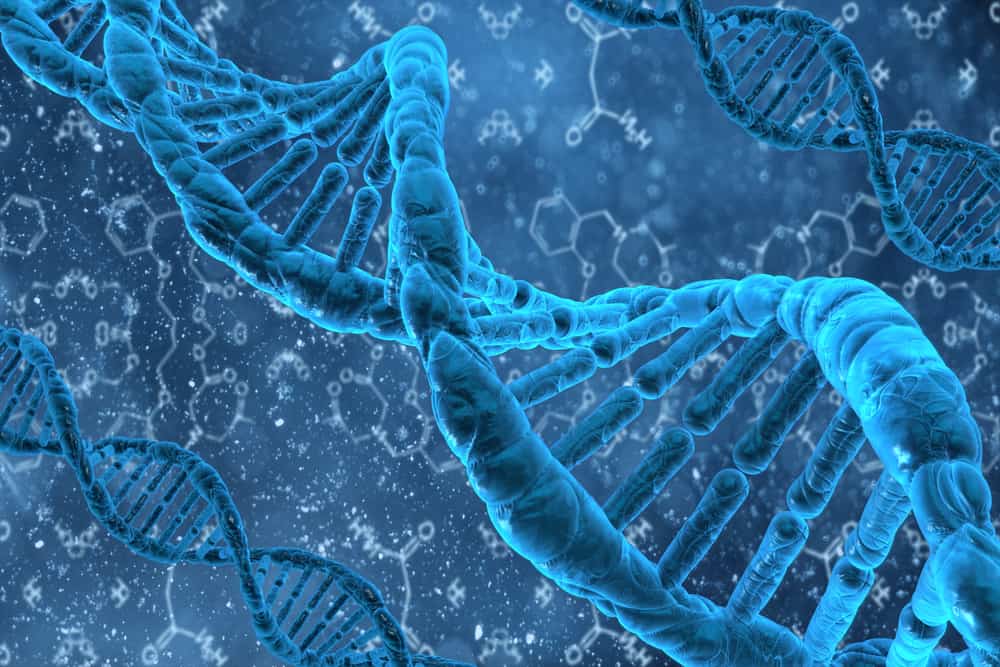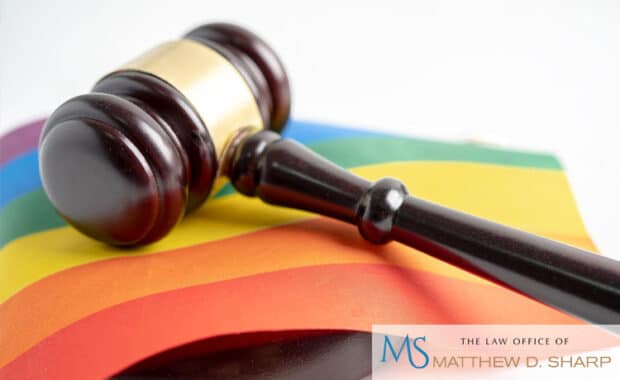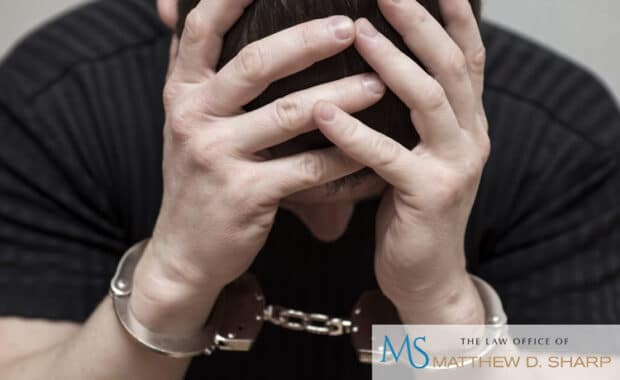Millions of people watch real crime dramas and movies that touch on how DNA is used as evidence.
DNA evidence is a useful tool, but it’s not infallible.
If you or someone you care about is facing a criminal charge and you have questions about how DNA evidence works, this post is for you.
Are you facing a criminal charge in Texas?
Matthew Sharp about your case »
How Does DNA Evidence Work?
Deoxyribonucleic acid, commonly referred to as DNA, is used in many criminal cases today. That’s because DNA uniquely narrows the field of available suspects in the human population. It’s accurate and very useful when properly collected and analyzed.
Information encoded within a certain individual’s DNA is a blueprint for his or her function and development. Just a tenth of one percent of human DNA is different between individuals. According to Scientific American, today’s forensic analysis using DNA is about 95 percent accurate.
Pictures of DNA make it seem quite complex. In reality, all DNA is composed of just four nucleotides—adenine, thymine, cytosine, and guanine.
Profiling of individuals using DNA didn’t exist until the mid-1980s decade. At that time, an English geneticist sought to identify individuals through DNA comparisons. The restriction fragment length polymorphism (RFLP) test was designed on the basis of this research.
How is DNA Evidence Used?
Today, crime scene investigators collect DNA from an array of sources. Investigators can compare DNA evidence to available databases to identify potential suspects.
It’s essential for investigators to take care in the collection and handling of biological evidence. It’s also essential that scientists use appropriate methods and analysis techniques.
When investigators use the proper methods, DNA evidence is quite accurate. The probability of one person’s profile matching another person’s is quite small.
When compared to eyewitness testimony or fingerprinting techniques, DNA collection is an effect means to match suspects to biological samples retrieved in a criminal investigation.
Why is DNA Re-Examination Important in Older Cases?
Many criminal attorneys use DNA evidence to prove a defendant’s innocence or guilt. DNA evidence has been used to exonerate individuals via post-conviction DNA analysis. Because DNA testing wasn’t available until quite recently, a re-examination of biological evidence collected in an older investigation may reveal that the convicted person’s DNA profile doesn’t match the DNA from the crime scene biological samples.
How Does Human Error Affect DNA Evidence Admissibility?
DNA evidence isn’t unassailable. If investigators make collection or handling errors involving the biological samples, the court may decide to exclude the DNA evidence in a trial.
If a certain laboratory contaminates biological samples, or its methods are considered unreliable, the judge may elect to reject its DNA analyses.
Quite often, defense lawyers seek to challenge DNA evidence. In doing so, the lawyer seeks to cast doubt on the forensic analysts and investigators’ methods in collecting and handling biological samples. The defense lawyer is unlikely to attack DNA profiling reliability as a whole. O.J. Simpson’s attorneys successfully used this defense strategy.
Moreover, the defense lawyer may question investigators’ adherence to state requirements regarding DNA evidence.
Why is the “Chain of Custody” Important?
The chain of custody provides important information about the individuals who physically possessed the evidence. Documentation is essential to the chain of custody’s integrity.
If the DNA evidence was improperly handled or contaminated, attorneys in a legal case might want to question those who handled the evidence.
The rule of thumb regarding the chain of custody is—the fewer handlers, the better. A shorter chain of custody improves the likelihood of court admissibility as well.
Poor documentation about the chain of evidence can derail a case involving DNA evidence.
What Biological Sources Provide DNA Evidence?
Biological material found in blood, hair, semen, tissue, urine, bone, saliva, teeth, urine, feces, or cells may be used to obtain DNA evidence.
Investigators often collect items that a crime-related person touched or wore. Investigators may seek to extract DNA material from hats, tools, masks, clothing, gloves, bedding, undergarments, weapons, soiled laundry, sexual assault kits, cigarettes, toothbrushes, fingernail clippings, toothpicks, cups or bottles, toilet paper or facial tissue, eyeglasses, hairbrushes and combs, envelopes, stamps, condoms, masking tape, rope, cords, or wire.
Investigators find the best DNA evidence when it’s not where it’s supposed to be. For instance, a break and enter crime occurs in a residential neighborhood. Near the forced entry, investigators find a woolen cap that the residents say isn’t theirs. Investigators recover several hairs from inside the cap, including one with root tissue, making it possible for investigators to obtain the perpetrator’s DNA profile.
It’s possible for forensic scientists to analyze tiny biological samples today. For instance, if an individual touches a weapon, he or she may leave skin cells on it.
This material leaves low level DNA, also known as touch DNA. It’s possible to collect touch DNA from a victim’s bruised skin. These samples are helpful when investigators can’t retrieve fingerprints, e.g. on a car dashboard or gun handle.
How Do Scientists Analyze DNA?
Laboratory scientists compare crime scene biological samples (also known as reference samples) to existing control samples.
In certain jurisdictions, taking DNA samples is as commonly performed as fingerprinting in the booking process. In other jurisdictions, a court order is needed to obtain reference samples.
Investigators also obtain reference samples from crime victims (unless he or she chooses not to assist in the investigation). A court order may be necessary to obtain reference samples in that case.
Elimination samples may be obtained from consensual conjugal partners as well as crime scene personnel, first responders, and lab analysts working on the case in order to exclude them.
The stakes are high in a crime investigation. Biological samples must be collected according to proper procedures. It must be carefully preserved to prevent its degrading in hot or humid conditions.
Research shows that storing biological evidence at room temperature or cooler conditions in controlled humidity is best for preserving dried biological stains. Liquid evidence must be refrigerated or placed in insulated materials.
Who Performs DNA Analysis?
Laboratory analysts study DNA. Those participating in the FBI National DNA Index System (NDIS) and other accredited research organizations must meet stringent education and training requirements.
Analysts must have at least an undergraduate degree in chemistry, biology, or another forensic science area. The analyst must complete nine coursework hours at the undergrad or graduate levels covering molecular biology, biochemistry and genetics.
DNA analysts at crime laboratories must keep their skills up to date as per the FBI Quality Assurance Standards (QAS).
Contact The Law Office of Matthew D. Sharp for the legal representation you need »
How Are DNA Tests Performed?
Many DNA laboratories are aligned with municipal, state, or regional law enforcement agencies.
Before analyzing biological samples at the lab, investigators may perform initial tests at the crime scene. They may screen for the presence of certain biological materials at that time.
Investigators take samples from the crime scene and compare them to “known” samples from the victim or suspect.
Many laboratories use this process to test for DNA:
- The lab scientist extracts DNA material from the cell.
- He or she uses the quantitation process to determine the quantity of DNA available.
- The analyst uses the amplification process to produce multiple copies of DNA.
- The analyst separates the amplified DNA to identify it.
- The DNA lab then analyzes and interprets the samples by comparing the DNA evidence to its known DNA profiles.
- Quality assurance technicians review the reports to ensure technical accuracy.
How Are DNA Profiles Compared to the Central Database?
The NDIS system is a national database. It’s also connected to the Combined DNA Index System (CODIS) shared by law enforcement agents around the country.
Law enforcement agencies compare DNA profile test results to existing DNA profiles in the database. There are at least 11 million DNA profiles in the CODIS system. The databases have been successfully used in almost 200,000 investigations to date.
A DNA lab enters information about a case into the CODIS system. Searches are conducted to compare the data to DNA profiles in the FBI NDIS database. Matches are then returned to the original lab.
NDIS (national DNA database) contains data concerning:
- Convicted offenders
- Arrestees
- Eligible forensic profiles (including unknown and missing persons)
- Biological relations of missing persons (voluntary DNA samples from relatives)
SDIS (state DNA database) contains data concerning:
- Convicted offenders
- Eligible forensic profiles in the state
LDIS (local DNA database) contains data concerning:
- Local forensic profiles
What’s the Bottom Line Concerning DNA Evidence?
Few people truly understand the scientific technology behind DNA analysis. However, many crime labs and law enforcement agencies compare DNA samples at the crime scene with the suspect’s DNA.
If a DNA match exists, many conclude that the defendant is guilty based on the probability that his or her DNA is unlikely to match another person’s DNA.
That’s why lawyers in a case involving DNA seek to show that the laboratory testing or analysis was flawed in some way.
Conversely, DNA evidence has proven to be an important tool in proving the innocence of those who were sent to prison before DNA testing was possible. If investigators took biological samples at the crime scene—and these samples are still available—it may be possible to show that the prisoner serving time isn’t guilty at all.
In this way, DNA evidence is a powerful tool to prove innocence. To date, almost 300 wrongfully-convicted people have been released from prison because of DNA evidence. Many of these people were erroneously convicted by eyewitness identifications.
Do You Have Concerns about How DNA is used as Evidence?
If you or someone you care about is facing a serious criminal charge, if you were wrongfully convicted, or if you have questions about DNA evidence, contact The Law Office of Matthew D. Sharp in Houston to request an initial case evaluation at 713-868-6100.






